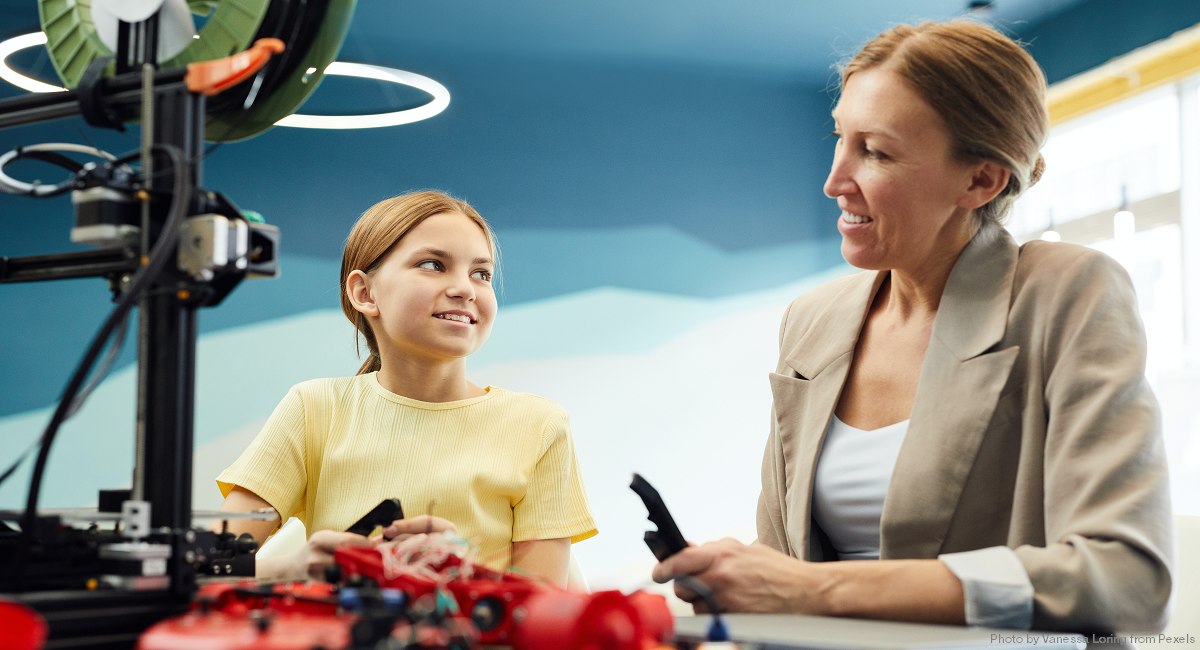
Creating a makerspace in a school or classroom has several benefits including but not limited to high student engagement, critical thinking skills are nurtured, and collaboration and communication is common. In a well-run makerspace, teachers and students are designing, testing, refining, and building materials that answer real-life needs.
Of course, the prospect of getting a makerspace off the ground can be overwhelming. Here are a few tips for helping build a dynamic makerspace:
Have a Leadership Team - Recruit a dedicated, forward-thinking group of educators – teachers, support staff, coordinators, administrators - who can see the power of creating this space for students. Not all members will be involved in the early planning stages, which is fine, but they will be motivated to contribute and offer help, ideas, and strategies as the space is built and maintained. This leadership group will set things in motion, setting the stage for others to join.
With a shared makerspace, consider having a designated leader or leaders to manage and make final decisions about the space. This helps keep the space maintained and organized – equipment will be monitored, supplies replenished, and materials and tools arranged neatly. The makerspace leadership team should also have insight on how to operate and troubleshoot the equipment.
In a recent Makerspace round table discussion, panelist Ryan Kinser – a multi-award winning trainer, teacher, and innovator who has managed multiple makerspaces – mentions that having others help to manage and take ownership of the space benefits all involved. For more on what Kinser has to say, as well as to learn about the experiences of other Makerspace SME’s, watch the webinar Makerspace : Logistics and Practical Tips to Get You Started by clicking here.
Explore and Experience Other Spaces - Have lead teachers travel to other school makerspaces to observe and explore their spaces. By seeing what works best in each of these spaces – classrooms, shared common areas, libraries, and more - the leadership team can formulate a plan of action at their school site. The plan can include room arrangement, furniture, tools and equipment, and organization of materials. The plan should also include the key skills students should learn while using the space.
Set Standards and Outcomes - As you formulate the layout and plan for the space, it’s important to start with the standards your team wants integrated in the curriculum as well as learning objectives and outcomes. Avoid seeing this space as simply a “playground.” Instead see it as a lab for collaboration, critical thinking, and problem solving. Integrating standards will be an ongoing process because of the different grade levels that will share the same space. As teachers begin to plan for the space’s use, develop lessons for each grade level. MyStemKits has standards-aligned STEM lessons, activities, and Design Challenges that will make planning easier and help teachers maximize the time they have in the makerspace.
Allocate spaces - Once a broad plan and vision is formulated, look at each prospective space and think about needs. For example, what is needed in an area used exclusively for 3D printing? Tables for the 3D printers, shelving and containers for materials like filament, tape, tweezers, and safety equipment, as well as space for additional tech such as laptops. Of course, needs will change as more time is spent in the space and new ideas are shared. Like the activities and projects planned, ensure the space is a dynamic one where untapped resources, materials, products, and tech can easily be implemented.
Budget is important - Develop a budget for what you want and what you think you can afford. Start with the ideal knowing that you can always subtract from the plan if needed. Assess what you already have available to you that can be included in your shared space. In the last couple of years, the federal government has made education-related funding available for districts and schools with the aim to help students bridge any learning gaps. Using funding guides like this one can help the makerspace leadership team develop plans that could result in an increased possibility of receiving the needed funds to set up and maintain the space.
The time and effort invested in your makerspace will most assuredly pay off with increased hands-on learning experiences for students that will help them build and strengthen key skills such as collaboration, critical thinking, communication, and creativity.
Thinking about getting started with your own makerspace? Make sure you have a clear idea for why you want to create the space in your school. Don’t just rely on being cool, trendy, or even innovative—do it with good reason. It’s a lot of work and well worth the struggle to make a meaningful learning experience for our students. The possibilities are indeed limitless when we allow students to cultivate their learning experiences with purposefully designed content in an innovative space.
For more ideas on makerspaces, check out this content the Boxlight Makerspace Round Table Discussions (recorded webinars).


